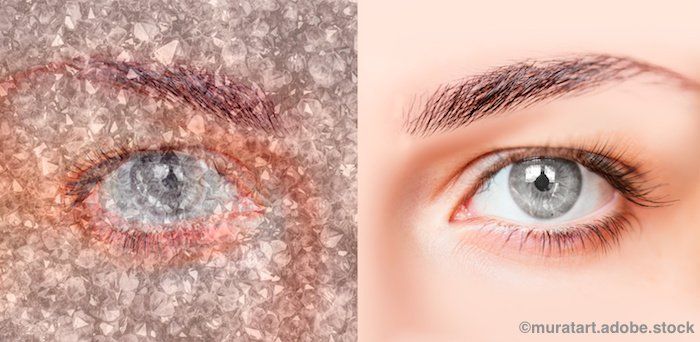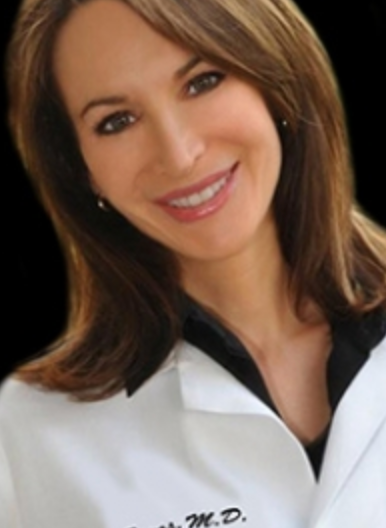Article
Reeling in the shark: How to take the fear out of dry eye diagnosis and treatment
Author(s):
Some doctors worry that once they make the initial dry eye diagnosis, they’ll be faced with the tough reality of treating it effectively. Luckily, positive results are possible with certain therapies.

Editor’s Note: Welcome to “Let's Chat,” a blog series featuring contributions from members of the ophthalmic community. These blogs are an opportunity for ophthalmic bloggers to engage with readers with about a topic that is top of mind, whether it is practice management, experiences with patients, the industry, medicine in general, or healthcare reform. The series continues with this blog by Melissa Toyos, MD. The views expressed in these blogs are those of their respective contributors and do not represent the views of Ophthalmology Times or UBM Medica.
Growing up in Louisiana, I was once taken fishing for small sharks on the Gulf Coast. As I stood on the beach, holding my fishing rod, I remember experiencing the sudden revelation that if I succeeded in hooking a shark, the next step would be to reel it in to me. By my own efforts, I would go from being happy on the beach to being face to teeth with a dangerous shark.
Some doctors have similar feelings about dry eye disease. We now know the problem is very common, with a range of estimates that all point to the fact that many people with dry eye are sitting in our waiting rooms.
We have a lot of diagnostic options, so doctors can choose the approach they like best. But some doctors worry that once they reel in that dry eye diagnosis, they’ll be faced with a tough reality of treating it effectively. I felt the same way about opening a dry eye clinic, until I learned that positive results are possible with certain therapies.
The view from the beach
When I started my practice, dry eye was an annoyance that many felt was just a moisture-level problem. With the confluence of dry eye’s effect on presbyopic lens performance, the exacerbating daily use of modern devices, and our recent understanding of inflammation as the root cause of dry eye, we have all become much more knowledgeable about the disease and its impact on the population.
Nevertheless, despite broad efforts by practitioners and high-visibility advertising campaigns with celebrities like Jennifer Aniston and Venus Williams, statistics still tell us that dry eye is dramatically underdiagnosed and undertreated. We need to change that.
Even dry eye experts find it impossible to agree on “the” test for dry eye. There is no clear-cut diagnostic test result. In my experience, tests do not quantify dry eye in a meaningful way, either. A number value might be the same or worse, but a patient feels better (or vice versa), leaving patients confused and frustrated. In my practice, we use screening questionnaires and testing primarily in FDA studies because they provide some objective data for an incredibly variable disease state.
Until there is a positive/negative dry eye equivalent to a pregnancy test, I’m going to continue to use the approach I find most effective: listen to my patients, ask questions, examine and push on lid margins to evaluate meibomian glands, and use compounded lissamine green stain to diagnose dry eye disease. My staff is trained to listen, get a careful history, and recognize the signs and symptoms of dry eye, even if patients aren’t complaining.
New treatments take the fear away
Before we opened a dry eye clinic in my practice, I wasn’t sure it was a good idea. Dry eye treatment was very individualized, and success could be incremental. This disease is widespread, underdiagnosed, and can be frustrating for both doctors and patients when they reach the end of traditional treatments without complete or even adequate resolution.
When I learned more about the work my husband, Dr. Rolando Toyos, was doing with intense pulsed light (IPL) therapy (Optima IPL, Lumenis), I got excited about the new clinic. A series of IPL treatments is the closest thing to a silver bullet that I have found, as it not only immediately reduces levels of cytokines and other inflammatory markers on the ocular surface, but also helps to improve the quality of secretions and the number of working glands over time.
IPL became a cornerstone of our new dry eye clinic. Other therapies include cyclosporine (Restasis, Allergan), lifitegrast (Xiidra, Shire), and, in select cases, loteprednol (Lotemax, Bausch + Lomb). We also offer platelet-rich plasma tears for dry eye, and we are the only U.S. distributor of a natural tear called Oculocin, composed of aloe vera (a humectant), naturally anti-inflammatory chamomile, and bee propolis, which provides the lipid component. We continue to explore cutting-edge research, including the effect of repository corticotropin injection (H.P. Acthar Gel, Mallinckrodt Pharmaceuticals) for severe dry eye. We’ve found that the advances treatment options available for dry eye today take the fear out of reeling in a diagnosis.
Disclosures:

Melissa Toyos, MD
P: 901/683-7255
Dr. Toyos is a partner and research director at Toyos Clinic in Nashville, Tennessee.She is a consultant for Iridex; speaker and consultant for Valeant and Sun; researcher for Kala, Lumenis, Magellan, Novaliq, Opternative, and Sun; speaker, consultant and researcher for Shire, Mallinckrodt, and Mixto Lasering; and consultant and researcher for DigiSight.
Newsletter
Don’t miss out—get Ophthalmology Times updates on the latest clinical advancements and expert interviews, straight to your inbox.




